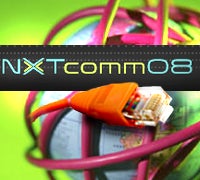 |
LAS VEGAS — Think big telecom carriers don’t use open source? Think again.
While telecommunications may appear dominated by proprietary solutions, BT, the industry giant formerly known as British Telecom, is a big supporter of open source. And its experiences might serve as an guide for how other industries might make use of the trend in software development.
Not only does the multibillion dollar British carrier consume open source, it is also a contributor and evangelist, according to Maria Pardee, president of global integration for BT Design.
“We are one of the largest service providers and we think we’re a market leader in open source,” Pardee said, speaking during a session here at the NXTcomm conference. “We see open source as the future of the industry.”
Concerns persist
Pardee, who said BT uses the open source Asterisk VoIP PBX
“It’s all about agility and speed,” Pardee said.
Asterisk’s creator Mark Spencer, another panelist and a longtime opens source advocate, cited additional benefits.
For Spencer, who also serves as CTO of Digium, Asterisk’s lead commercial sponsor, open source provides his company with a competitive advantage against proprietary telecom players like Avaya and Nortel.
For one reason, Spencer believes open source developers are more dedicated.
Whether working as part of their business or as hobby, open source developers are choosing to participate in development, he said, because they’re either passionate about the product or designing it to solve a problem for them — not because they’ve been assigned to.
Additionally, despite the sizable presence of Avaya, Nortel and other big names using proprietary technology, Spencer said efforts like Asterisk prove that open source can favorably compare to closed source.
“When you look at Asterisk [and] see how many people have actually contributed code, it is likely less than 1,000 people,” Spencer said. “It is still shocking how 1,000 developers, working part-time, can compare against Avaya or Nortel.”
Despite open source’s growing popularity and perceived benefits, however, it’s not always an easy sell to developers and enterprises.
Rakesh Radhakrishnan, senior principal IT architect at Sun Microsystems, told the audience that questions often arise about how firms can put open source into production and get support when problems occur. Sun’s MySQL acquisition, for instance, signals a way that open source projects can offer support and appeal to customers, he said.
Such concerns might be strike some as ironic, considering that support and services, along with hardware in some cases, are some of the key ways that open source firms derive their revenues.
“We don’t make money giving away free software,” Spencer said. “We make money with services and hardware around the key project that we’ve created.”
For BT, Pardee admitted that she had been originally worried about open source because of what she described as safety issues.
“The biggest challenge is the perception of how to use open source, since it’s not the traditional approach and there is still a perception that using open source to run mission-critical applications is not protected,” Pardee said.
“Our challenge is … getting talent to recognize this is the way of the future,” she said. “It’s a transformation — large change for large companies.”
Spencer added that he feels concerns about open source security are paradoxical, since he believes open source software can actually prove more reliable for customers.
According to that line of thinking, if an open source vendor gets bought out or ends development, existing customers still have access to its code and can continue to support it.
The perception of open source’s safety is changing, Pardee agreed, but she added that its growth still requires evangelizing — and its use may strike some businesses as a risky undertaking.
Still, BT at least isn’t shying away from adopting open source software as well as its accompanying practices.
She said that in addition to using Asterisk code, BT complies with open source licensing like the GPL, which requires code modifications to be contributed back to the community.
“We absolutely contribute back, because it would be wrong not to,” Pardee said.
By sharing BT’s code improvements with the wider open source development community, BT’s competitors may benefit from their efforts, Pardee conceded. But that’s not a concern for her.
“If Deutsche Telekom uses code that we contributed back to open source, that’s great,” Pardee said. “We’re betting that we’re going to make our money based on superior customer service.”


